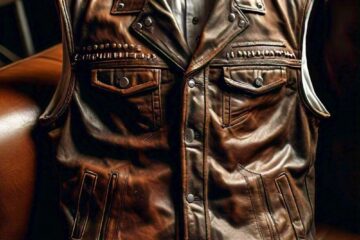When you think of traditional German attire, the iconic image of lederhosen and the Bavarian shirt might come to mind. These garments are more than just costumes; they are a window into the rich cultural history of Bavaria and the surrounding Alpine regions. The lederhosen, often associated with Oktoberfest and festive German celebrations, have a story that spans centuries. Alongside them, the Bavarian Shirt, with its distinct patterns and styles, plays a crucial role in completing the traditional look. Let’s take a deep dive into the fascinating history of these garments, exploring how they evolved and what they symbolize today.
The Origins of Lederhosen – Practicality Meets Tradition
Lederhosen, meaning “leather trousers” in German, have their origins rooted in practicality. The rugged terrain of the Bavarian Alps required durable clothing, and leather was the material of choice for those who worked in the mountains. These early lederhosen were worn by peasants, hunters, and laborers who needed clothing that could withstand the harsh conditions of their environment.
In the 16th century, lederhosen began to take on a more defined style, becoming shorter and tighter. This evolution was influenced by French fashion trends, which valued form-fitting clothing. However, while French nobility donned silk and velvet, Bavarian men stuck with their sturdy leather. These trousers were usually made from deer or goat hide, which provided both flexibility and strength. The length of lederhosen varied, with some ending just above the knee and others reaching the calf. The choice often depended on the wearer’s occupation or regional preference.
Lederhosen were not just functional; they also carried a social significance. They were often adorned with intricate embroidery, which was a way to display one’s regional pride. Each area of Bavaria and the surrounding Alpine regions had its own distinct style of embroidery, with patterns and colors that could identify the wearer’s origin. This sense of identity and belonging was crucial in a time when mobility was limited, and communities were tightly knit.
Lederhosen in the 18th and 19th Centuries – A Symbol of Rural Identity
By the 18th century, lederhosen had become more than just workwear; they were a symbol of rural Bavarian identity. This period saw the rise of the German Romantic movement, which celebrated the natural landscape and traditional ways of life. As cities grew and industrialization spread, there was a renewed interest in preserving rural customs, and lederhosen became a key element of this cultural revival. During the 19th century, lederhosen started to be associated with Bavarian nationalism. The garments were worn during local festivals, which celebrated Bavarian culture and heritage. These events were a way for people to assert their identity in a rapidly changing world. At this time, lederhosen were still primarily worn by men, particularly those who wanted to express their connection to their rural roots.
Interestingly, it was during this era that lederhosen began to be seen as formal wear, especially for those participating in traditional events. The trousers, which were once a symbol of the working class, now carried a certain prestige. They were worn by the nobility and even by royalty during hunts or other outdoor activities. This shift in perception helped solidify lederhosen’s place in Bavarian culture, making them an enduring symbol of tradition.
The Evolution of the Bavarian Shirt – From Everyday Wear to Iconic Fashion
While lederhosen take center stage, the Bavarian shirt is equally important in completing the traditional Bavarian look. These shirts, typically made from cotton or linen, are known for their comfort and breathability, making them ideal for both work and leisure. The classic Bavarian shirt features a checkered or striped pattern, often in shades of blue, red, or green, and is usually worn with the top button left undone.
The origins of the Bavarian shirt can be traced back to the 18th and 19th centuries, around the same time lederhosen were gaining popularity. Like lederhosen, these shirts were initially worn by rural workers, who needed practical and durable clothing. The checkered pattern was a popular choice because it was easy to produce and hid stains well, an important feature for those who worked outdoors.
As with lederhosen, the Bavarian shirt evolved over time, becoming more elaborate as it became associated with traditional dress. By the late 19th century, these shirts were often paired with lederhosen during festivals and other special occasions. The combination of the two garments created a distinct look that became synonymous with Bavarian culture.
Lederhosen and Bavarian Shirt in the 20th Century – The Revival and Global Spread
The 20th century was a period of significant change for both lederhosen and Bavarian shirts. After World War I, there was a decline in the wearing of traditional clothing, as people sought to modernize and distance themselves from the past. However, in the 1930s, there was a revival of interest in Bavarian traditions, driven in part by the rise of tourism in the region. Liederhosen and Bavarian shirts became popular souvenirs for visitors, who wanted to take home a piece of Bavarian culture. This period also saw the global spread of Bavarian fashion, as German immigrants brought their traditions with them to other countries. In the United States, for example, communities with strong German roots, such as those in the Midwest, began to celebrate their heritage by wearing lederhosen and Bavarian shirts during festivals and other events. This helped to establish these garments as iconic symbols of German culture abroad.
After World War II, the popularity of lederhosen and Bavarian shirts continued to grow, thanks in large part to the global popularity of Oktoberfest. This annual festival, which celebrates Bavarian culture, became a worldwide phenomenon, with cities around the globe hosting their own versions of the event. Lederhosen and Bavarian shirts became the standard attire for these celebrations, further cementing their place in global fashion.
The Role of Lederhosen in Modern Bavarian Culture
Today, lederhosen are more than just traditional clothing; they are a symbol of Bavarian pride. While they are still worn during festivals and special occasions, lederhosen have also become a fashionable item, worn by people of all ages and backgrounds. In Bavaria, it is not uncommon to see people wearing lederhosen to weddings, family gatherings, or even casual outings. The modern lederhosen are often made from high-quality leather and feature intricate embroidery that reflects the wearer’s regional heritage. Some versions are even customized with personal designs or family crests, making them a unique expression of identity. In recent years, there has been a resurgence of interest in traditional crafts, with many people seeking out handmade lederhosen that are created using traditional methods.
Lederhosen have also become a symbol of sustainability, as they are often made from locally sourced materials and crafted by local artisans. This has made them popular among those who are looking for clothing that is both fashionable and environmentally friendly. The durability of lederhosen also means that they can be passed down from generation to generation, further adding to their appeal.
The Influence of Bavarian Shirts on Contemporary Fashion
The Bavarian shirt has also found its place in modern fashion, with its checkered and striped patterns becoming popular worldwide. These shirts are often paired with jeans or casual trousers for a relaxed, yet stylish look. The simplicity and versatility of the Bavarian shirt make it a wardrobe staple, not just in Bavaria, but across the globe. In recent years, there has been a trend towards incorporating traditional elements into contemporary fashion, and the Bavarian shirt is a perfect example of this. Designers have begun to experiment with different fabrics, colors, and patterns, creating modern interpretations of the classic Bavarian shirt. This has helped to keep the shirt relevant in today’s fashion landscape, while still honoring its traditional roots. Bavarian shirts are also popular among those who appreciate sustainable fashion. Like lederhosen, these shirts are often made from natural materials and crafted by skilled artisans. This focus on quality and sustainability has made Bavarian shirts a favorite among conscious consumers who are looking for clothing that is both stylish and environmentally friendly.
Lederhosen and Bavarian Shirts in Popular Culture
Lederhosen and Bavarian shirts have made their mark on popular culture, appearing in movies, television shows, and music videos. These garments are often used to represent German culture, particularly in comedic or stereotypical contexts. However, they have also been embraced by artists and designers who appreciate their unique style and cultural significance.
In recent years, there has been a growing interest in traditional clothing, as people seek to connect with their heritage and express their individuality. Lederhosen and Bavarian shirts have benefited from this trend, with many people choosing to wear them as a way to celebrate their German roots or simply to stand out from the crowd. Celebrities have also played a role in popularizing Bavarian fashion, with several high-profile figures donning lederhosen and Bavarian shirts for special events. This has helped to bring these garments into the mainstream, making them a fashionable choice for those who want to make a statement.
The Future of Lederhosen and Bavarian Shirts – Tradition Meets Innovation
As we look to the future, it is clear that lederhosen and Bavarian shirts will continue to play an important role in both Bavarian culture and global fashion. These garments, which have been passed down through generations, are a testament to the enduring appeal of traditional clothing. However, they are also evolving, with modern designers finding new ways to incorporate these iconic items into contemporary fashion. One area of innovation is in the use of new materials and techniques. While traditional lederhosen are made from leather, some designers are experimenting with alternative fabrics, such as suede or synthetic materials. This has made lederhosen more accessible to those who may be looking for a vegan or more affordable option. Similarly, Bavarian shirts are being made from a wider range of fabrics, including organic cotton and recycled materials, which appeal to environmentally conscious consumers. There is also a growing trend towards customization, with many people choosing to have their lederhosen or Bavarian shirt tailored to their specific preferences. This can include everything from personalized embroidery to custom-made buttons, allowing individuals to create a garment that is truly one-of-a-kind. This focus on individuality is a reflection of the broader trend towards personalization in fashion, as people seek to express their unique style.
The Cultural Significance of Lederhosen and Bavarian Shirts Today
Despite these modern innovations, the cultural significance of lederhosen and Bavarian shirts remains strong. These garments are more than just fashion items; they are symbols of Bavarian heritage and identity. For many people, wearing lederhosen or a Bavarian shirt is a way to connect with their roots and honor the traditions of their ancestors. In Bavaria, these garments are still worn with pride during festivals, weddings, and other special occasions. They are a way for people to come together and celebrate their shared culture, while also expressing their individuality. This sense of community is at the heart of Bavarian culture, and lederhosen and Bavarian shirts are a key part of that tradition. Outside of Bavaria, these garments have become a symbol of German culture more broadly. They are worn by people of all backgrounds, whether they have German heritage or simply appreciate the unique style and history of these garments. This global appeal is a testament to the enduring popularity of lederhosen and Bavarian shirts, which have transcended their origins to become a beloved part of fashion worldwide.
How to Incorporate Lederhosen and Bavarian Shirts into Your Wardrobe
If you’re looking to add a touch of Bavarian style to your wardrobe, there are plenty of ways to incorporate lederhosen and Bavarian shirts into your everyday outfits. Whether you’re dressing for a special occasion or simply want to add some unique pieces to your collection, these garments offer a versatile and stylish option.
For a casual look, consider pairing a Bavarian shirt with jeans or chinos. The checkered or striped pattern adds a pop of color to your outfit, while the relaxed fit ensures comfort throughout the day. You can also roll up the sleeves for a more laid-back vibe. If you’re attending a festival or special event, lederhosen are the perfect choice. These trousers can be dressed up or down, depending on the occasion. For a more formal look, pair them with a crisp white shirt and a traditional jacket. For a casual outing, a simple T-shirt or a Bavarian shirt will do the trick. Accessories are also key to completing your Bavarian-inspired look. Consider adding a traditional belt with a decorative buckle, a felt hat with a feather, or a pair of sturdy boots to your outfit. These small details can make a big difference in pulling your look together.
Conclusion – The Timeless Appeal of Lederhosen and Bavarian Shirts
Lederhosen and Bavarian shirts are more than just clothing; they are a celebration of tradition, culture, and individuality. These garments, which have their roots in the rugged terrain of the Bavarian Alps, have evolved over centuries to become iconic symbols of Bavarian culture. Today, they are worn with pride by people around the world, whether as a way to honor their heritage or simply to make a fashion statement. As we move forward, it is clear that the appeal of lederhosen and Bavarian shirts will continue to endure. With their blend of tradition and innovation, these garments offer a unique and stylish option for those who appreciate quality craftsmanship and timeless design. So, whether you’re heading to Oktoberfest, attending a wedding, or simply looking to add a touch of Bavarian flair to your wardrobe, lederhosen and Bavarian shirts are sure to make a lasting impression.
Keep an eye for more news & updates on Tribune Tribune!




